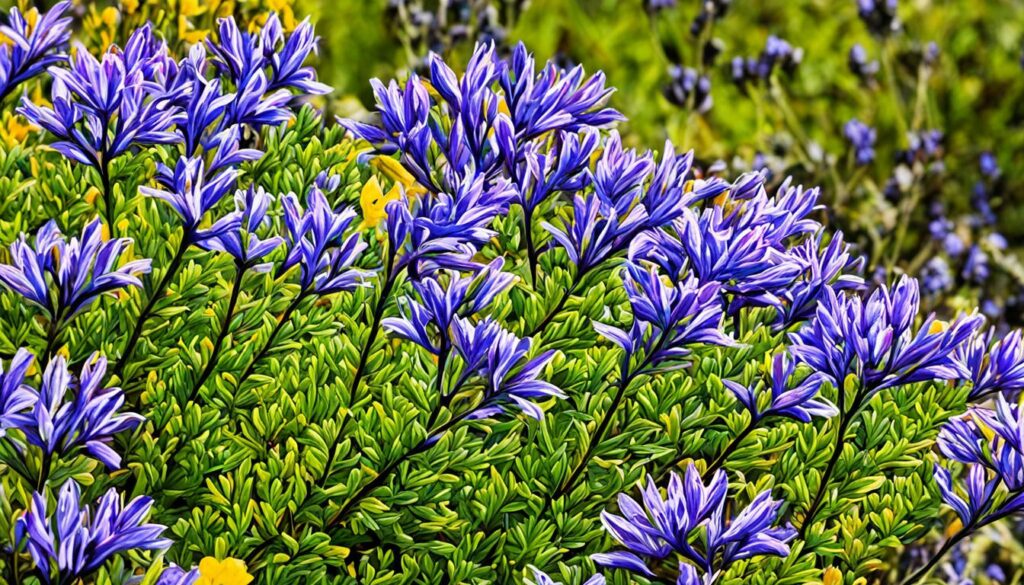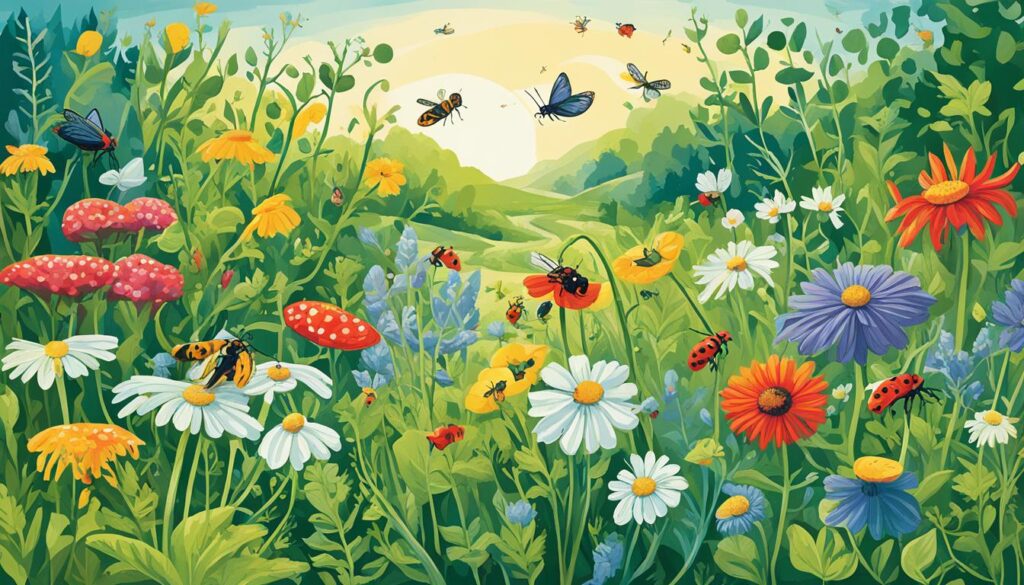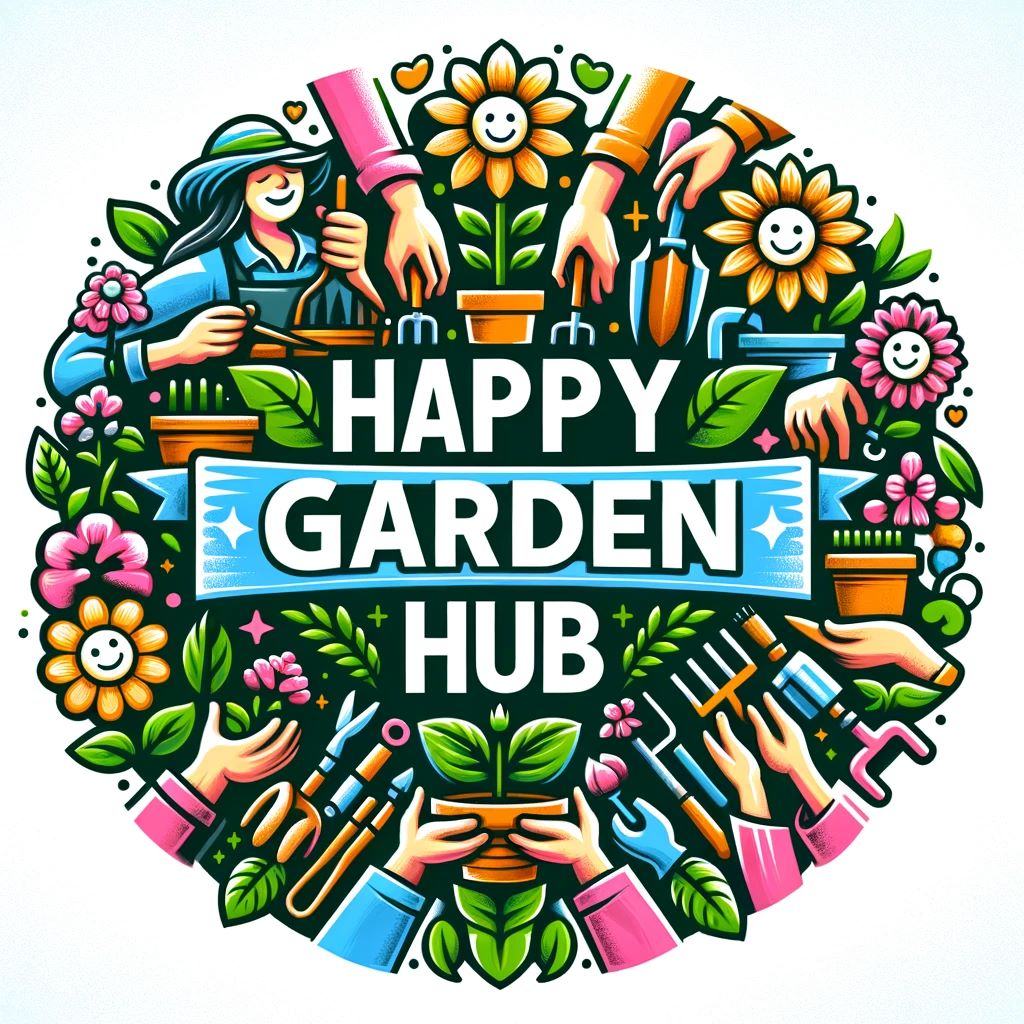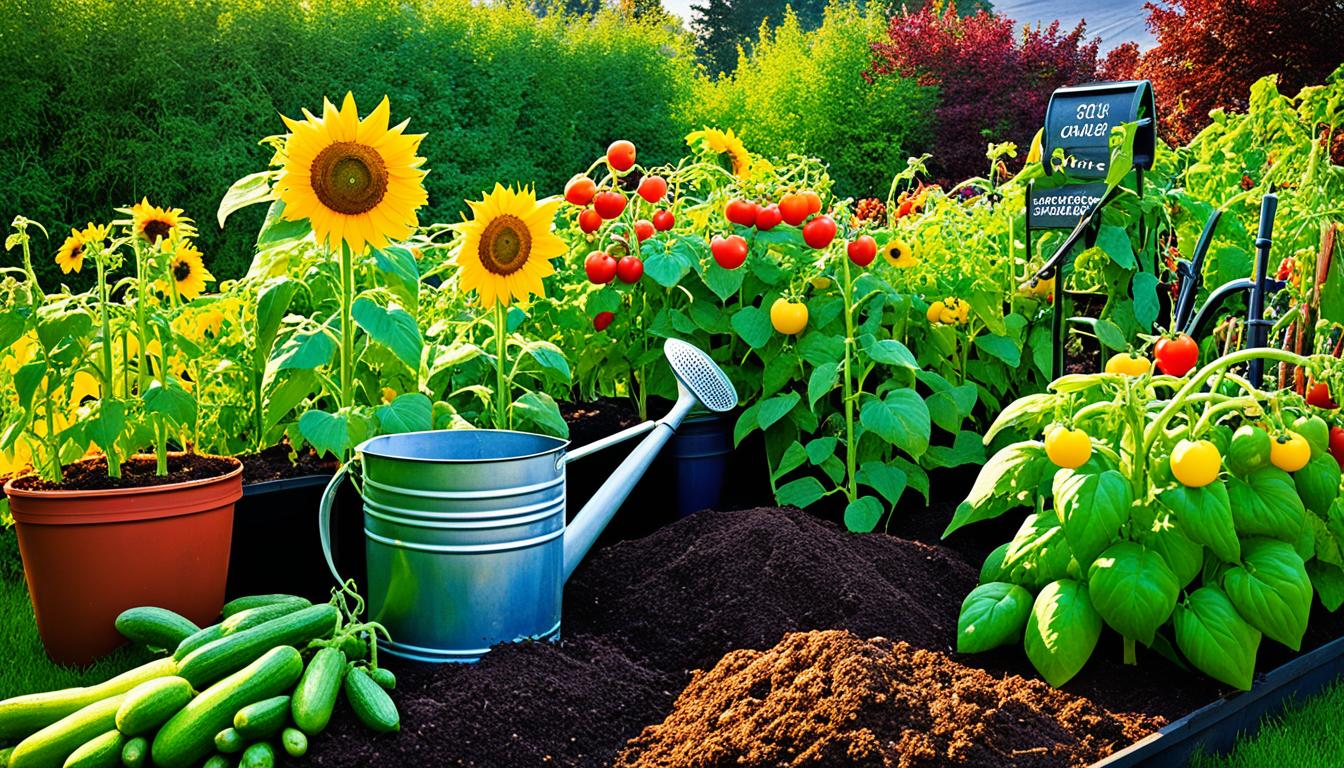This post contains affiliate links.
Imagine strolling through a lush garden, where vibrant blooms color the landscape and the air is filled with the sweet scent of nature. As you wander among the plants, you can’t help but feel a deep connection to the earth, a sense of harmony with the environment. This is the beauty of organic gardening.
Organic gardening is more than just a hobby or a pastime. It’s a way of life that embraces sustainability, eco-consciousness, and a commitment to nurturing the earth. By adopting organic gardening practices, you can not only create a thriving and beautiful garden but also contribute to a greener and healthier planet.
Whether you have a green thumb or are just starting your gardening journey, this article will provide you with invaluable insights and practical tips on how to grow your garden organically. From sustainable practices to eco-friendly techniques, we’ll uncover the secrets to cultivating a bountiful and environmentally-friendly garden that will leave you feeling fulfilled and connected to the world around you.
Key Takeaways:
- Discover the joys of organic gardening and its significant benefits for the environment.
- Learn practical tips and techniques to start your own sustainable garden.
- Explore eco-friendly practices such as rainwater collection and recycling materials.
- Understand the importance of using native plants and creating your own compost.
- Embrace chemical-free pest control methods and the significance of planting trees and hedges.
What is Eco Gardening?
Eco gardening, also known as sustainable gardening, is a green thumb’s way of nurturing the planet while creating a beautiful oasis. By embracing eco-friendly practices in your garden, you can reduce waste, protect habitats, and minimize the use of chemicals. By turning to natural fertilizers and pest control methods, eco gardening helps create a healthier ecosystem that benefits both plants and wildlife.
Benefits of Eco Gardening
Eco gardening is not just about creating a stunning garden; it’s about making a positive impact on the environment. By utilizing sustainable practices, you contribute to a greener world by conserving resources, supporting biodiversity, and promoting healthier living spaces.
“Eco gardening is like a harmonious duet between you and nature, where your love for plants meets the earth’s embrace.”
Here are some key benefits of eco gardening:
- Reduces waste: Eco gardening emphasizes recycling and reusing materials, minimizing the amount of waste that ends up in landfills.
- Preserves habitats: By choosing native plants, you provide a natural habitat for local wildlife, supporting their survival and contributing to the overall ecological balance.
- Minimizes chemical use: By opting for natural fertilizers and pest control methods, you help maintain a healthier ecosystem while reducing the risk of chemical exposure for you, your family, and your pets.
- Creates resilient landscapes: Eco gardens are designed to be sustainable and low-maintenance, requiring fewer resources such as water and fertilizers.
Whether you’re a seasoned gardener or new to the world of horticulture, eco gardening offers a fresh approach to cultivating your green haven. From choosing the right plants to adopting eco-friendly techniques, every step brings you closer to a more sustainable and beautiful garden.
Sustainable Gardening Tips
To help you embark on your eco gardening journey, here are some practical tips to incorporate into your gardening routine:
| Sustainable Gardening Tip | Description |
|---|---|
| Compost and organic amendments | Create nutrient-rich soil by composting kitchen scraps, grass clippings, and garden waste. This natural fertilizer improves soil fertility while reducing the need for synthetic fertilizers. |
| Choose native plants | Opt for plants that are indigenous to your region. Native plants require less water, thrive in local conditions, and provide food and shelter for local wildlife. |
| Water efficiently | Collect and reuse rainwater to water your plants, reducing reliance on municipal water sources. Install drip irrigation systems to minimize water waste. |
| Avoid synthetic chemicals | Embrace natural pest control methods, such as companion planting and integrated pest management, to control pests without harming beneficial insects or the environment. |
By implementing these sustainable gardening tips, you can transform your garden into an oasis of green, while being a responsible steward of the planet.
How Do I Start a Sustainable Garden?
So, you’re ready to embark on the journey of starting a sustainable garden? Excellent choice! Not only will you be contributing to a greener future, but you’ll also enjoy the rewards of a thriving and eco-friendly oasis right in your backyard. To help you get started, here are some essential eco-friendly gardening tips:
Assess and Optimize Your Space
First things first, take a good look at your available space and determine how you can best utilize it for your sustainable garden. Consider converting part of your lawn into a garden bed or opt for containers if you have limited space. If you prefer a more communal approach, joining a community garden can be a wonderful way to learn and collaborate with fellow green enthusiasts.
Choose Native Plants
When selecting plants for your sustainable garden, prioritize native species that thrive in your region. Native plants are well-adapted to the local climate and soil conditions, requiring less maintenance and minimal watering. By choosing these plants, you’ll create a biodiverse and resilient ecosystem in your garden while reducing the need for excessive watering and chemical interventions.
Create Nutrient-Rich Soil
A healthy garden begins with nutrient-rich soil. To establish a sustainable garden, focus on incorporating compost and organic amendments into your soil. Compost is a fantastic natural fertilizer that enriches the soil with essential nutrients, supports beneficial soil organisms, and improves overall soil structure. By nurturing your soil, you’ll provide a solid foundation for your plants to thrive in an organic and sustainable way.
Pro tip: If you’re new to composting, don’t worry! There are plenty of online resources and local gardening communities that can guide you through the process.
Start Small and Expand Gradually
Rome wasn’t built in a day, and neither is a sustainable garden. Starting small allows you to manage and learn from your garden while gradually expanding over time. By taking it one step at a time, you’ll gain valuable experience, discover what works best for your garden, and reduce the chances of feeling overwhelmed. Remember, sustainable gardening is a journey, and each step counts towards creating a greener and more harmonious environment.
With these eco-friendly gardening tips in mind, you’re well on your way to creating a sustainable garden that not only benefits the environment but also brings you joy and fulfillment. Embrace the process, get your hands dirty, and witness the beauty of nature’s resilience as it thrives in your very own sustainable garden.
Conserve & Collect Rain Water
When it comes to sustainable gardening practices, rainwater collection is a game-changer. By harnessing the power of the rain, you can reduce your water consumption and promote water conservation in your garden. Plus, it’s completely free! So, how can you make the most out of every drop of rain? Let’s find out.
One of the easiest ways to collect rainwater is by using rain barrels. These barrels can be placed strategically in your garden to catch and store rainwater for later use. Simply connect a downspout from your roof gutter to the barrel, and voila! You have a sustainable and reliable water source.
If you’re worried about overflowing rain barrels, fear not! You can easily add a standpipe or an overflow pipe to redirect excess water away from your garden. This ensures that you maximize rainwater collection without any waste or mess.
Now, if you’re looking for a more substantial storage solution, underground rain tanks are worth considering. These larger tanks are buried in your garden and can store a significant amount of rainwater. They are efficient, space-saving, and provide an ample water supply for your plants.
Rainwater collection not only helps to conserve water but also reduces your reliance on municipal water sources. It’s a win-win situation! So, start collecting rainwater today and keep your garden green and thriving, even during dry spells.
The Benefits of Rainwater Collection
Rainwater collection offers several key benefits:
- Sustainable water source: By collecting rainwater, you reduce the strain on local water supplies and contribute to a more sustainable future.
- Cost-saving: Utilizing rainwater can significantly lower your water bill, especially during the peak watering season.
- Chemical-free irrigation: Rainwater is free from chlorine and other chemicals, making it an ideal choice for irrigation without any harmful effects on your plants or the environment.
- Promotes healthy plant growth: Rainwater is naturally soft and acidic, providing optimal conditions for the growth of plants.
Rainwater collection is a simple and effective sustainable gardening practice that benefits both the environment and your garden. So, don’t let precious rainwater go to waste – collect it, conserve it, and watch your plants flourish!
| Benefits of Rainwater Collection |
|---|
| Sustainable water source |
| Cost-saving |
| Chemical-free irrigation |
| Promotes healthy plant growth |
Recycle and Reuse Raw Materials
In sustainable gardening, recycling and reusing materials is not only eco-friendly but also a creatively satisfying way to reduce waste. Instead of purchasing new plastic pots, why not repurpose household items as unique plant containers? From old teapots to boots that have lost their pairs, the possibilities are endless!
Have a look around your home and get imaginative with items that can find new life in your garden. Metal buckets, glass jars, and even certain types of plastics can be repurposed for growing plants. Not only will you give these items a new purpose, but you’ll also add a touch of personality to your garden.
But it doesn’t stop there! Don’t let that pile of old wooden pallets go to waste. With a little creativity and some basic DIY skills, you can turn them into beautiful planters, potting tables, or vertical gardens. Reclaimed wood is also an excellent choice for creating raised beds, garden furniture, or decorative accents.
By exploring unconventional materials and repurposing what you already have, you’ll not only reduce waste but also demonstrate your resourcefulness and commitment to sustainability. Check out the image below for some inspiration!
Buy Local
When it comes to sustainable gardening, supporting local businesses is the way to go. By buying your plants, tools, and materials from local garden centers and nurseries, you not only contribute to the growth of your community but also minimize the carbon footprint associated with long-distance shipping. Plus, you can take advantage of the variety of sustainable and organic gardening products that these eco-friendly garden centers offer.
As an eco-friendly gardener, you understand the importance of reducing transportation costs and supporting the local economy. By purchasing locally, you help your community thrive and create a greener world. So, why not give your local garden center a visit today and discover the many benefits it has to offer?
The Benefits of Supporting Local Businesses
- Sustainability: By buying from local garden centers, you support sustainable gardening practices by reducing the environmental impact of transportation and promoting a circular economy.
- Quality: Local garden centers often provide higher-quality plants and products since they are sourced locally and cater to the specific needs of your region.
- Expertise: The staff at local garden centers are knowledgeable about the local climate, soil conditions, and plant varieties, making them an invaluable resource for gardening advice and tips.
- Community Support: When you buy local, you contribute to the growth and vitality of your community by supporting small businesses and creating local jobs.
“Supporting local garden centers not only benefits your garden but also strengthens the bond between you and your community. It’s a win-win situation for both your garden and your neighborhood.” –
By supporting local businesses, you ensure that sustainable gardening resources and eco-friendly garden centers continue to thrive. So, next time you need supplies for your garden, remember to shop local and make a positive impact in your community.
Use Native Plants
When it comes to sustainable landscaping and eco-friendly gardening ideas, incorporating native plants into your garden is a game-changer. Native plants are uniquely adapted to the local climate, making them more resilient and requiring less maintenance, water, and pesticides compared to non-native species.
By using native plants in your garden, you not only create a beautiful and vibrant landscape but also support local wildlife. Native plants provide food and habitat for birds, butterflies, and other beneficial insects, contributing to the overall health of the ecosystem.
Additionally, native plants help conserve water. Their natural resilience allows them to thrive with less irrigation, reducing the need for excessive watering. This not only saves water but also reduces the environmental impact associated with water usage.
So, how can you incorporate native plants into your garden? Start by researching the native plants that are well-suited to your region. Visit local garden centers and nurseries that specialize in native species. They can provide expert advice and guidance on selecting the right plants for your specific area.
When planting native species, consider creating diverse habitats within your garden. Mix different types of plants that bloom at different times of the year to ensure a constant source of nectar and food for pollinators. This will attract a variety of wildlife, making your garden a haven for biodiversity.
Remember, native plants not only make your garden more sustainable but also create a unique sense of place. They connect you with the natural beauty of your local environment and contribute to the preservation of native plant species.

| Benefits of Using Native Plants |
|---|
| 1. Less maintenance and water requirements |
| 2. Support local wildlife and biodiversity |
| 3. Contribute to water conservation |
| 4. Create a sense of place and connection to the local environment |
Make Your Own Compost
Composting is like magic for your garden. By recycling organic materials such as grass clippings, kitchen scraps, and garden waste, you can create nutrient-rich compost that will make your plants thrive. Say goodbye to synthetic fertilizers and hello to nature’s secret weapon!
Creating your own compost is not only eco-friendly but also incredibly easy. Start by layering organic materials such as leaves, vegetable scraps, coffee grounds, and eggshells. As you pile them up, make sure to maintain a good balance of greens (nitrogen-rich materials) and browns (carbon-rich materials).
Aerate your compost pile regularly by turning it with a pitchfork or a compost aerator. This will introduce oxygen and help speed up the decomposition process. Remember, happy compost needs moisture too! Water your pile occasionally to keep it moist but not soggy.
Your compost pile is like a gourmet buffet for beneficial microorganisms and earthworms. These little creatures break down the organic matter, transforming it into nutrient-rich humus. In return, they provide your plants with essential minerals and micronutrients.
After a few weeks or months, depending on the materials and conditions, your compost will transform into dark, crumbly, and earthy-smelling fertilizer. It’s a sign that your hard work has paid off!
Now, it’s time to spread the love! Use your homemade compost to enrich your garden soil, improve its structure, and boost plant growth. Simply mix it into the top few inches of soil around your plants, and watch them flourish.
Composting is not only beneficial to your garden but also helps reduce organic waste going to landfills, lowering greenhouse gas emissions. It’s a win-win situation for both your plants and the planet!
| Greens (Nitrogen-rich) | Browns (Carbon-rich) |
|---|---|
| Fruit and vegetable scraps | Dry leaves |
| Grass clippings | Twigs and branches |
| Coffee grounds | Straw or hay |
| Eggshells | Paper or cardboard |
Go Chemical Free
Avoiding chemical pesticides and herbicides is a crucial component of sustainable gardening. Instead, embrace natural pest control methods and organic weed killers that are safer for your plants and the environment. Let’s take a look at some sustainable gardening methods that can help you go chemical-free.
Companion Planting
Companion planting is a creative and effective way to naturally deter pests and promote plant health. By strategically planting certain plants together, you can take advantage of their natural defense mechanisms. For example, marigolds emit a scent that repels many common garden pests, while attracting beneficial insects like ladybugs that feed on aphids and other pests.

Mulching for Weed Control
Mulching is not only great for conserving moisture in your garden but also helps suppress weed growth. By layering organic mulch, such as straw or wood chips, around your plants, you create a natural barrier that prevents weed seeds from germinating and competing with your desired plants. Plus, mulch adds organic matter to the soil as it breaks down, promoting healthier plant growth.
Organic Weed Killers
When it comes to managing weeds, opt for organic weed killers instead of chemical-based solutions. Organic weed killers are formulated using natural ingredients and are safe to use in your garden. Vinegar-based weed killers, for example, can be highly effective at killing weeds without the harmful impacts of synthetic herbicides.
“By reducing reliance on chemicals in your garden, you create a greener and healthier environment for your plants and the ecosystem as a whole.”
Implementing these sustainable gardening methods not only reduces your environmental footprint but also promotes a healthier and more vibrant garden. By going chemical-free, you can enjoy the benefits of a thriving garden while protecting the planet.
Plant Trees and Hedges
When it comes to creating a beautiful and sustainable garden, don’t forget the power of trees and hedges. These natural wonders provide numerous benefits that go beyond their aesthetic appeal. By incorporating tree planting and hedges into your garden design, you can truly elevate your outdoor space while making a positive impact on the environment.
Trees are not only a source of shade and beauty; they also play a crucial role in improving air quality. Through a process called photosynthesis, trees absorb carbon dioxide and release oxygen, helping to reduce greenhouse gases and combat climate change. Additionally, trees provide shelter and food for various species, supporting wildlife habitats and promoting biodiversity.
Hedges, on the other hand, act as natural windbreaks, protecting your garden from strong gusts and reducing energy consumption by acting as a barrier against cold winds. They can also create privacy, allowing you to enjoy your outdoor space without feeling exposed. With a variety of hedge types available, you can choose the one that best suits your needs and preferences.
“A garden without trees is like a sky without stars.”
When selecting trees and hedges for your garden, consider native species that are well-adapted to your region. Native plants typically require less maintenance, water, and pesticides, making them a sustainable choice. They are also more resistant to local pests and diseases, reducing the need for chemical interventions.
Ready to transform your garden into an eco-friendly oasis? Here are some tree and hedge options to consider:
| Trees | Hedges |
|---|---|
| Maple | Boxwood |
| Oak | Privet |
| Dogwood | Yew |
| Cherry | Beech |
Remember to consider the mature size of trees and hedges before planting to ensure they have enough space to grow. Proper spacing will prevent overcrowding, allowing each plant to thrive and reach its full potential. Take into account factors like sunlight, soil conditions, and water availability to determine the best location for your plants.
By embracing tree planting and hedges, you not only add beauty and shade to your garden but also contribute to a healthier environment. So go ahead and create an eco-friendly garden design that will make both you and Mother Nature proud!
Conclusion
So there you have it – the beauty and benefits of organic gardening! By embracing sustainable gardening practices, you not only create a visually appealing garden but also contribute to a greener and healthier world. Say goodbye to harsh chemicals and hello to reduced chemical exposure!
One of the key advantages of organic gardening is the improved health of your soil. By avoiding synthetic fertilizers and pesticides, you promote the natural balance of nutrients and beneficial organisms in the soil. This results in healthier plants that are more resistant to pests and diseases.
But the benefits don’t stop there. Organic gardening supports biodiversity by providing a habitat for pollinators, birds, and other wildlife. By incorporating native plants, you create a sustainable ecosystem that attracts and sustains these important creatures.
So start collecting rainwater, recycling materials, and using native plants – these eco-friendly gardening tips will help you create an amazing organic garden. Together, let’s be part of the movement towards a more sustainable future. Happy gardening!
FAQ
What are some organic gardening tips for eco-friendly growth?
What is eco gardening?
How do I start a sustainable garden?
How can I conserve and collect rainwater for my garden?
How can I recycle and reuse raw materials in my garden?
Why should I buy local for my gardening needs?
Why should I use native plants in my garden?
How can I make my own compost for my garden?
What are some chemical-free pest control methods I can use in my garden?
How can I incorporate trees and hedges into my garden?
What are the benefits of organic gardening and sustainable practices?
Source Links
- https://ecogardener.com/blogs/news/eco-friendly-tips-for-your-organic-vegetable-garden
- https://www.bhg.com/gardening/yard/lawn-care/10-tips-for-sustainable-gardening/
- https://theroundup.org/organic-gardening-tips/
This post contains affiliate links.

